Pet Safe Plants Brighten Pet-Friendly Living
Hey, did you know nearly half of all plant-related pet emergencies happen at home? I know, it’s wild to think your pretty fern could upset Fluffy’s tummy. But you don’t have to give up on green friends. Let’s choose plants that charm you and keep Rover out of the vet’s waiting room.
First up, the spider plant (a tough houseplant with arching green leaves you’ll see dancing in a gentle breeze). Then there’s the feathery fern (soft fronds that feel like velvet between your fingers). Both are vet-approved picks so your cat or dog can nibble safely. Bring them into every room and get ready for extra tail wags.
Essential Pet Safe Plants for Indoor and Outdoor Spaces
Pet safe plants get a thumbs-up from the ASPCA and trusted vets. That means cats, dogs, and little critters can roam your home or yard without trouble.
If you’re picking indoor green pals, start with a Spider Plant (a plant with long, arching leaves). It likes bright, indirect light and feels happy at 60–80°F. Its leaves even help clean the air. Next up, Boston Fern (a feathery fern that loves moist, humid spots). Keep it in indirect light and mist those soft fronds now and then. Then try an Areca Palm (a feathery palm with yellow-green fronds). It wants bright, indirect light and evenly moist soil. And don’t forget Parlor Palm (a small palm with fanlike leaves). It’s happy in low to medium light and damp soil.
Have you ever smelled fresh basil on a morning breeze?
Oops, I mean switched to succulents and air plants (Tillandsia). Succulents like Haworthia and Echeveria store water in their thick leaves. They need bright light and a drink only when the soil feels bone-dry (succulent: a plant that holds water in its leaves). Air plants don’t even need soil, just bright, indirect light and a weekly soak or mist to perk up.
By the way, these little guys all earned non-toxic ratings from vets.
Outside, you can add safe blooms for playful pups and curious cats. Marigolds (bright orange daisylike flowers) love full sun and regular watering. Their scent even helps keep pests away. Snapdragons (spiky flowers that look like dragon mouths) brighten full sun to partial shade spots, just keep the soil evenly moist.
And don’t forget your kitchen herbs. Basil (a sweet-smelling herb) and Rosemary (a woody-leaved herb with a piney aroma) both crave full sun and well-draining soil. Snip them for salads or just breathe in that scent. Plus, they’re pet safe, so your fur pals can’t get hurt if they wander too close.
Matching each plant to its light, water, and soil needs helps you care like a pro. These picks are pretty forgiving of small watering blips.
Planting these now sets you up for a pet-friendly green space.
Relax, you’ve got this.
| Plant | Type | Light | Care Summary | Toxicity |
|---|---|---|---|---|
| Spider Plant | Indoor | Bright, indirect | Water every 1–2 weeks, 60–80°F | Non-toxic |
| Boston Fern | Indoor | Indirect | High humidity, keep soil damp | Non-toxic |
| Areca Palm | Indoor | Bright, indirect | Evenly moist soil, 65–75°F | Non-toxic |
| Parlor Palm | Indoor | Low–medium | Moist soil, avoid drafts | Non-toxic |
| Haworthia | Indoor | Bright | Water every 2 weeks, dry soil first | Non-toxic |
| Echeveria | Indoor | Bright | Let soil dry between waterings | Non-toxic |
| Air Plant (Tillandsia) | Indoor | Bright, indirect | Soak or mist weekly | Non-toxic |
| Marigold | Outdoor | Full sun | Regular watering, well-draining soil | Non-toxic |
| Snapdragon | Outdoor | Full sun–partial shade | Keep soil evenly moist | Non-toxic |
| Basil | Outdoor | Full sun | Well-draining soil, water regularly | Non-toxic |
| Rosemary | Outdoor | Full sun | Dry soil between waterings | Non-toxic |
Caring for Pet Safe Plants: Light, Water, and Soil Guidelines
Let’s chat about soil, water, and light for your furry-friend-safe plants. Check that plant chart above for each species’ exact light and watering needs. I’ll share easy recipes and tips to keep your greenery happy.
Soil Mix Recipes by Plant Type
• For cacti: mix 2 parts coarse sand, 1 part peat (decayed plant matter that holds moisture), and 1 part perlite (volcanic glass that helps water drain).
Feels gritty, perfect for desert dwellers.
• For ferns: blend equal parts peat, coco coir (fiber from coconut husks), and compost (decayed organic matter that enriches soil).
It should feel springy and rich between your fingers.
Pet-Safe Fertilizer Schedules
• Diluted fish emulsion: stir 1 teaspoon into 1 gallon of water. Feed every 4 weeks when your plants are actively growing.
You might catch a whiff of ocean, totally normal.
• Worm-castings tea: steep ½ cup of castings in 1 gallon of water for 24 hours, then strain and apply once a month.
Give it a gentle swirl before pouring.
Leaf Cleaning Best Practices
• Gently wipe leaves with a damp microfiber cloth, and support the underside so you don’t tear them.
• For narrow or fuzzy foliage, mist lightly and brush off dust with a soft paintbrush.
It’s like giving them a mini spa day.
Humidity-Boosting Tips
• Group tropical greens on a shallow tray filled with pebbles and water so roots stay dry while the air stays moist.
• Run a small humidifier nearby for ferns and calatheas to recreate that forest-floor feel.
You’ll almost hear the soft hum of the jungle.
Styling Pet Safe Plants: Safe Placement and Décor
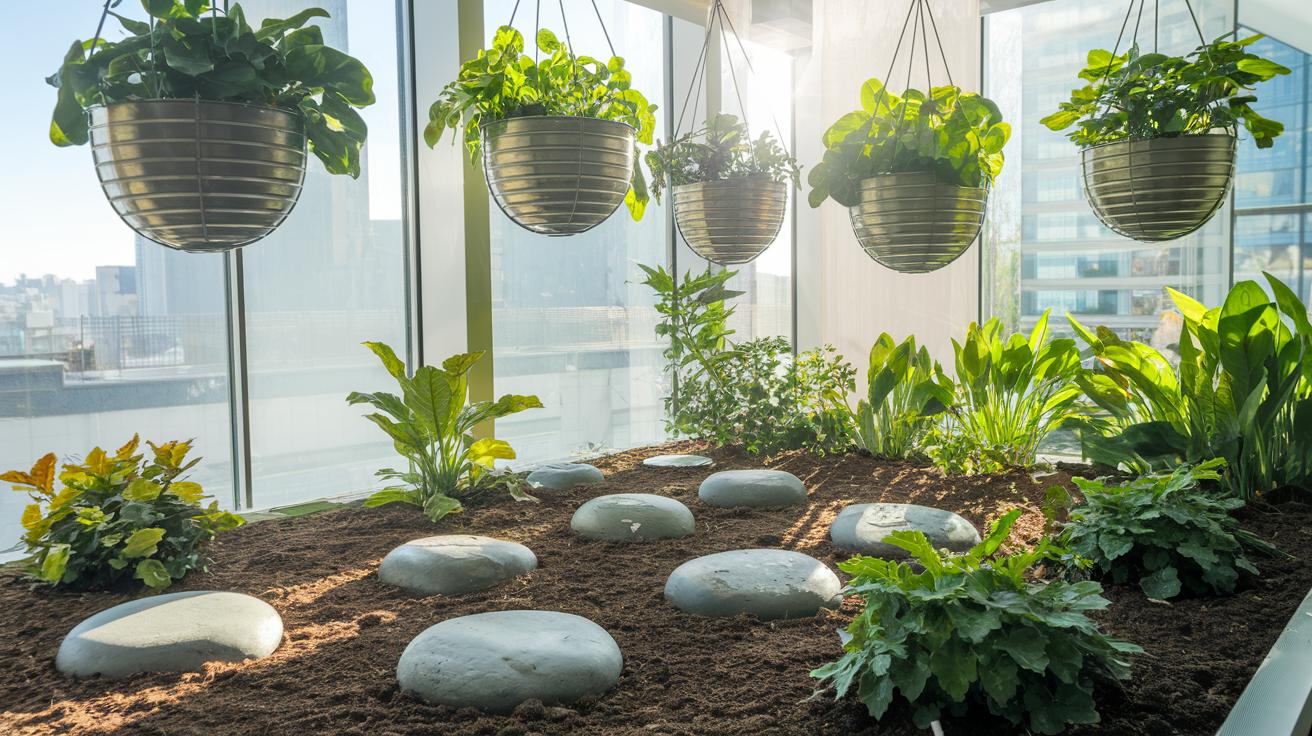
Group plants by height for that secret garden feel. Put tall ferns (plants with feathery leaves) up high, so curious cats can’t reach. Then drop a cluster of spider plants (green-striped, arching leaves) on a low table for a leafy nook. It’s like a tiny, pet-friendly jungle in your living room.
Use hanging planters or wall hooks to lift vines away from playful paws. And soft macrame hangers cradle pots of string-of-hearts (tiny heart-shaped leaves) for a swooping green canopy. Seriously, it feels like a floating forest. No more worried looks at dangling fronds.
Cover the soil top with smooth river stones or coconut chips (bits of coconut husk that lock in moisture). That way, you’ll stop surprise digs and keep little paws clean. Or pop on a clear terrarium lid (a see-through plastic cover) over low-planter soil. Problem solved.
No more surprise snacks of soil.
Move your pots around every week or two to keep pets guessing. Try several small plant stands by a sunny window or add a tiny shelf above a pet bed. Pets are less likely to pick at plants if they never know where they’ll appear next. Keeps your green corner fresh, too.
• Raise tall ferns on high shelves or sturdy plant stands for pet safety
• Hang pots with macrame or strong wall hooks to keep vines out of reach
• Top soil with smooth river rocks or coconut chips to stop digging
• Cover ground-level planters with clear terrarium lids or wire cages for extra protection
• Group succulents (fleshy-leaved plants) in a cozy corner for a pet-friendly display
• Rotate your pots weekly so curious pets lose interest in any one spot
Preventing Pet Safe Plants from Being Chewed
Even plants labeled safe for pets can give your fur babies an upset tummy if they nibble too much. Have you ever found bits of basil on the floor? It’s a reminder that curious paws and teeth still need a little guidance.
Try these friendly tips. They’ll keep your plants happy and your pets out of chewable trouble.
- Lift pots up. Put them on a tall shelf or a sturdy plant stand so pets can’t reach the soft fronds
- Tidy up daily. Sweep fallen leaves and petals every day to clear tempting snacks
- Use natural deterrents. Scatter citrus peels around the base or mist leaves with a pet-safe bitter spray (a gentle spray that tastes yucky to pets)
- Teach “leave it.” Reward your pup or kitty when they ignore your greenery. A little treat goes a long way
- Create a barrier. Surround small pots with a wire basket or cover them with a terrarium cover (a clear container over plants)
Back to enjoying your green space, and wag-free, nibble-free plants.
Pet Safe Plants Poisoning: Symptoms and Immediate Response
How to Spot Poisoning in Your Pet
Have you ever caught your cat sniffing a Monstera leaf? Or watched your pup nibble on a lily? If that happens, watch for odd clues. Lots of drooling can mean mouth irritation.
A puff up in their lips or tongue is mouth swelling (when tissues swell). They might paw at their face or neck if those leaves feel like they’re stinging. You might hear hiccup-like breaths if their throat’s acting up.
Eat enough, and they might throw up or get loose stools. Sometimes you’ll see shaky muscles (tremors) or sudden jerks (seizures). And if they seem really tired, like flopping on the floor, that’s called lethargy. A racing heart or heavy panting means the toxin is on the move.
Quick First Steps and Vet Help
And trust me, I know it’s scary when your fur baby’s in trouble. Spot something strange?
First, gently remove any plant bits from your pet’s mouth, no digging around too much, you know. If they’ll let you, rinse their mouth with cool water. No forcing, okay?
Then jot down the time you found them and the plant name (if you know it). Heck, snap a quick photo or tuck a leaf into a ziplock bag for your vet. Next, call your vet or the ASPCA Pet Poison Hotline at 888-426-4435. They’ll walk you through the right steps.
Don’t try home remedies or feed random foods that can make things worse. The moment you see drooling, vomiting, or odd behavior, reach out. Quick notes on when it happened and what plant it was help your vet decide fast. Quick action might save your pet hours of discomfort.
Vet and Expert Picks for Pet Safe Plants
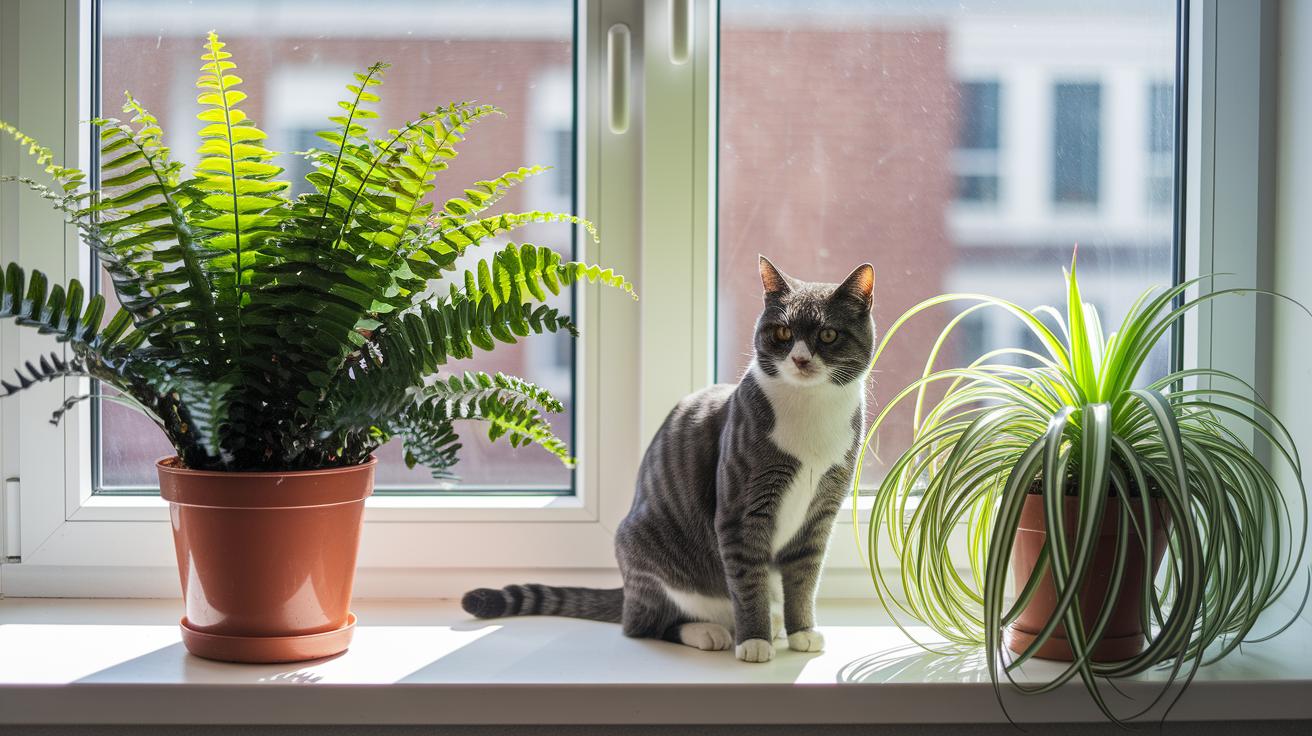
Looking for green buddies that won’t harm your fur pals? I’ve got you covered with picks vets swear by.
- ASPCA Toxic and Non-Toxic Plant List: A searchable database from the American Society for the Prevention of Cruelty to Animals. It shows which plants can make pets sick (toxic) and which ones are safe to nibble (non-toxic).
- Pet Poison Helpline Database: Vets lean on this site for clear toxicity ratings so you know how risky a plant bite could be.
- Pet-Friendly Plant Nurseries: Online shops like The Sill and Bloomscape tag their non-toxic picks right in the catalog, no guesswork if your cat leaps onto the shelf.
- Houseplant Subscription Boxes: I’ve tried The Houseplant Box and Succulent Studios, and every plant inside is vet-approved and pet safe.
- Veterinary Association Websites: Often run by university extensions, these sites keep up-to-date guides on indoor and outdoor plants that won’t hurt your dog or cat.
Final Words
In the action, we gathered your top indoor and outdoor picks, from ferns to marigolds, all gentle on curious cats and playful pups.
We walked you through care basics (light, water, soil), shared styling ideas to keep greenery pet-proof, and offered tips to stop nibbling trouble.
You learned how to spot plant poisoning signs, handle first aid steps, and tap into expert-vetted sources.
Enjoy creating a cozy, worry-free green corner, your family and furry friends will thank you for these pet safe plants.
FAQ
What outdoor plants are safe for pets?
Outdoor plants safe for dogs and cats include Marigolds and Snapdragons (full sun to partial shade) plus kitchen herbs like Basil and Rosemary in well-draining soil, all rated non-toxic.
Which indoor plants are safe for cats and dogs?
Indoor, non-toxic plants for cats and dogs include Spider Plant, Boston Fern, Parlor and Areca Palms, Calathea, Haworthia, Echeveria, and air plants—they enjoy indirect light and pet households.
What are the best pet-safe plants for bathrooms?
Pet-safe bathroom plants include Boston Fern, Spider Plant, Parlor Palm, and air plants. They thrive in indirect light, high humidity and won’t harm curious pets if they brush against leaves.
Which low-light indoor plants are safe for pets?
Low-light, pet-friendly houseplants include Parlor Palm, Calathea, and Spider Plant. All three are non-toxic, adapt well to shaded corners, and bounce back from occasional watering lapses without harming pets.
Which large indoor pet-safe plants are best?
Large, non-toxic indoor plants include Parlor Palm, Areca Palm, and Boston Fern. They fill rooms with greenery, prefer 60–80°F, and stay safe when placed out of pets’ reach.

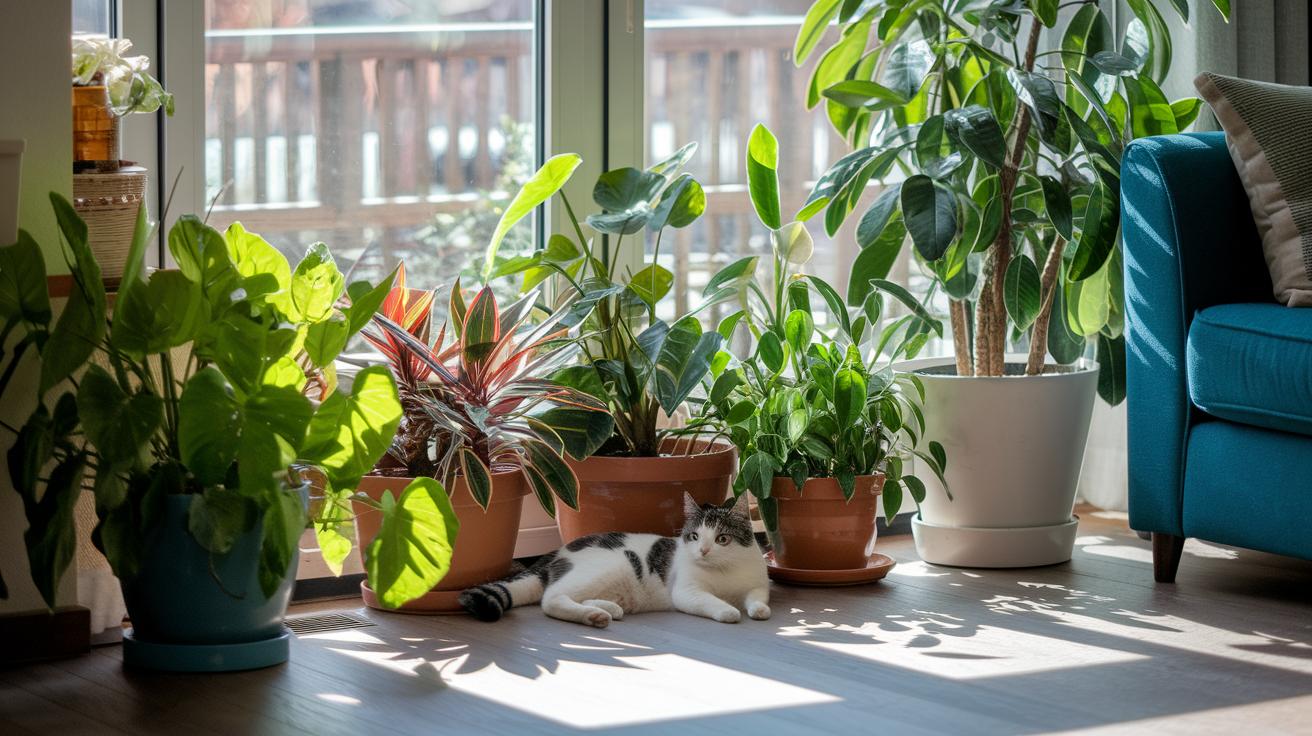




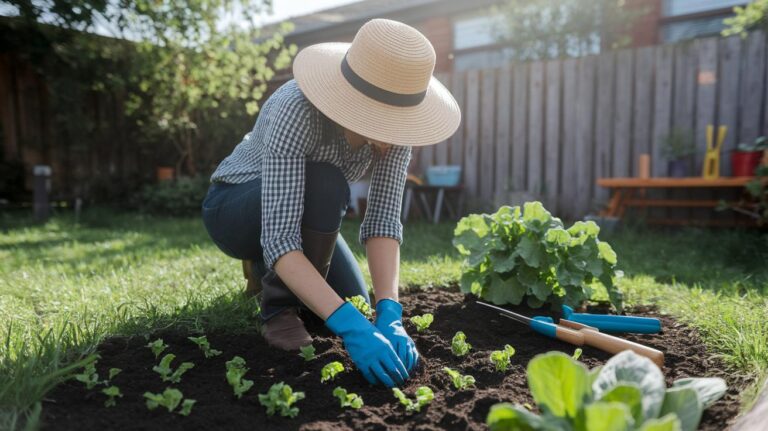
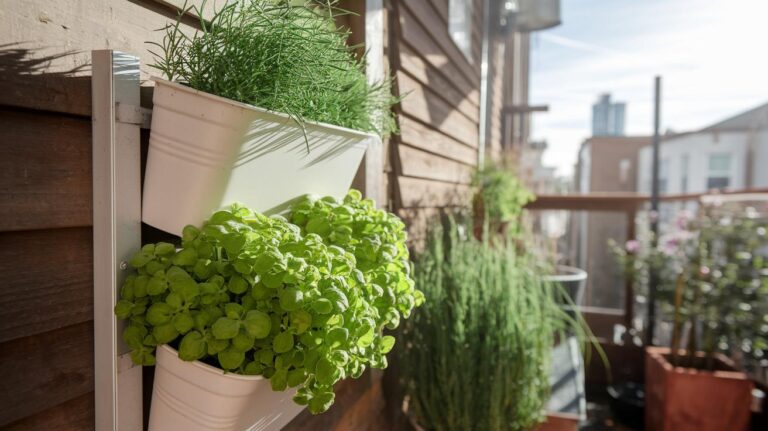
2 Comments